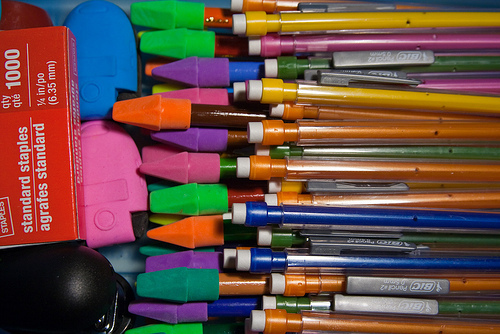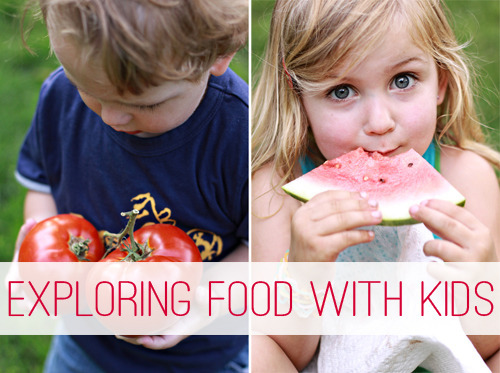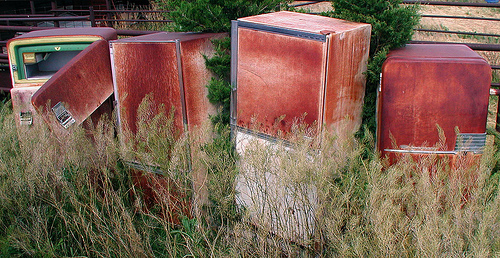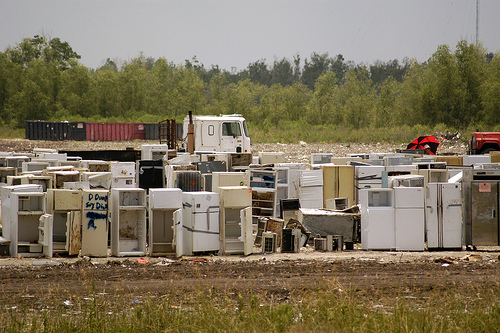Mandi Ehman's Blog, page 131
March 14, 2013
Saying Goodbye to Google Reader and Alternatives for Your Feed Reader


Yesterday afternoon, thousands of Google Reader users logged into their account only to be shocked and dismayed by a pop-up message that Google Reader will be retired on July 1st of this year.
Although it’s a free service, it’s one that many of us rely on for staying in touch with other blogs, and the prospect of finding a new service can feel daunting!
I spent this morning researching a few of the alternatives that I’ve seen mentioned, and my conclusion at this point is that Feedly.com is the best option. I’ve heard great things about The Old Reader as well, but unfortunately their bandwidth isn’t able to handle the influx of users, and I’m frustrated that I haven’t been able to import my Google Reader data, so I will probably stick with Feedly instead. (Feedly has done a remarkable job of scaling very quickly in the 24 hours since this announcement!)
Note: Feedly currently pulls from the Google Reader API, but they already have a replacement solution called Normandy in place already, and they seem confident that the transition on July 1st will go off without a hitch.
Feedly actually runs as a plugin in Firefox, Chrome or Safari or as an app for iOS or Android rather than as a web-based reader like Google Reader, but your account will sync across various devices and browsers. If you’re still using Internet Explorer, now is a great time to switch to Firefox (my personal favorite) or another one of these browsers, which are preferred by most techies.
Importing your Google Reader account to Feedly is easy (but do this sooner rather than later so that you don’t forget about it and lose all of your data on July 1st!): head to Feedly.com, where you will connect with your Google account, import your feeds and create your Feedly account in just a few clicks.
You can then customize Feedly to your heart’s content, and it offers some pretty nifty “magazine” style layouts in addition to the Title or Full Post view you get with Google Reader.
This is a great option for moving all of your feeds over in one fell swoop, but don’t forget that there’s another way to stay in touch with Life Your Way as well! Subscribe to our weekly newsletter and each weekend you’ll receive an email with all of the latest posts so you can quickly find the ones you’re interested in and stay on top of the latest happenings here on the site.
Do you use Google Reader now?

Mandi Ehman is the founder and publisher behind Life Your Way and the co-author of All in Good Time, as well as a wife and the homeschooling mom to four beautiful girls. She lives with her family on a little slice of heaven in wild, wonderful West Virginia and loves coffee, chocolate, easy meals, beautiful things and minimalist spaces.
Saying Goodbye to Google Reader and Alternatives for Your Feed Reader is a post from Life Your Way
© 2010-2013 Purple Martin Press, LLC | All rights reserved - This feed is provided for the convenience of Tech Your Way subscribers. Any reproduction of the content within this feed is strictly prohibited. If you are reading this content elsewhere, please send an email to contact@yourway.net to let us know. Thanks.

Quick Tip: The Easy Way to Slice a Banana


source: Mandi Ehman
Today I’m sharing a quick tip over at Easy Homemade — my simple method for slicing bananas:
Have you seen this handy dandy banana slicer? The gadget itself may seem a little silly since people have been slicing bananas with a simple knife for centuries, but the reviews on it are well worth your time!
In our house, we add banana slices to pretty much everything — oatmeal, yogurt, granola, cereal, french toast, pancakes, waffles and more. I personally prefer my banana slices cut in half circles rather than straight slices, and because of that, I started slicing them with this simple method below.
This isn’t a revolutionary tip, but my husband thought it was pretty cool when I showed him how I do it, so I figured I’d share it with you as well!
Quick Tip: The Easy Way to Slice a Banana is a post from Life Your Way
© 2010-2013 Purple Martin Press, LLC | All rights reserved - This feed is provided for the convenience of Food Your Way subscribers. Any reproduction of the content within this feed is strictly prohibited. If you are reading this content elsewhere, please send an email to contact@yourway.net to let us know. Thanks.

8 Ways to Start Saving Money for Christmas Now

The following post is from Tiffany of Mommy Goes Green:

source: metaphoricalplatypus
Every year my husband and I write a budget saving a little each month for Christmas and when November comes around, there is nothing in the Christmas coffer. There is always a need that ranks much higher now than the ones waiting for us come winter.
After many years playing that game, we’ve taken a different approach and so far, it seems to be working: we have saved 25% towards our Christmas budget.
Every month we accumulate small amounts of money earned in different ways and stuffed into a wallet to spend frivolously, because a couple of one dollar bills does not seem to add up to much and a latte-to-go is so much more fun.
Our new method is simple: with a few exclusions, anything that isn’t from a paycheck goes in the Christmas fund, even if it’s just a couple bucks.
It’s easy to keep track, we’re just using an envelope stashed away in the kitchen and once we meet our goal, it will be deposited until it’s needed. This is where my bits and pieces of cash are coming from:
1. Coins
Like many guys, my husband doesn’t have a wallet full of change. They are promptly deposited into a dish we keep in our kitchen. The cash from the contents are now earmarked for Christmas.
2. Shopping Rebates and Cash Back
Several times a year, I get a small rebate check in the mail for buying a new toothpaste or most recently, a box cutter. I also do quite a bit of our shopping online, making sure to go through eBates and ShopatHome to get a few bucks back.
I am piling up checks for a couple months and will cash them all in. (Note: Make sure to check for an expiration date on all checks.)
3. Phone Apps
Several new shopping apps will give you cash when you purchase specific items. My favorite, Endorse, has given me $29 for going to my local coffee shop. I’ve also scored money for buying diapers, paper towels and get this, GAS! I just leave the money in my account and will request a transfer to Paypal before Christmas.
4. Sell Your Stuff
Clutter is not my thing and if it’s not pretty or useful, I’m selling it. I’ve hit up Craigslist, eBay, consignment stores and our local Facebook swap groups to get rid of things. When the weather warms up, I will be hosting a garage sale. Check out these 13 great ways to sell your excess stuff.
5. Found Money
Ever find a $5 in your coat pocket or change at the bottom of the washing machine? That goes, too. Straight into the Christmas stash.
6. Gift Cards and Merchandise Credit
I have a knack for storing, but not actually using, gift cards. I’ve decided to throw those in the Christmas fund, just make sure to check for expiration dates. I might also sell them for cash. Instead of wasting time trying to find an item for exchange, I’m also putting merchandise credits I receive into our savings container.
7. Swagbucks
When I used Swagbucks regularly, I earned one or two Amazon gift cards per month. I usually cashed them in for toilet paper or something equally boring. I’m trying to use it more often now and will hold on to my points until the holiday to cash in for gift cards to spend on gifts.
8. Mystery Shopping and Focus Groups
I do a few mystery shops a year and usually deposit the checks never to be seen again. This year, I’m adding them to my pile-o-checks and will cash them in for Christmas cash. I also hope to get on a focus group panel as they can pay well. I got $125 last year for spending about 2 hours of my time.
Bonus Tip
Here’s a tip that does double duty: get $50 now and have a place to stash your cash. Open an online checking account at Capitol One 360 (formerly ING Direct)! We’ve had one for several years and love their service.
What other small chunks of change do you get that can be saved now for Christmas?

Tiffany is a wife and mom of two, living simply to indulge her family’s love of outdoor recreation and travel. You can find her contributing at Simple Homemade, The Creative Mama and her personal home on the web, Mommy Goes Green.
8 Ways to Start Saving Money for Christmas Now is a post from Life Your Way
© 2010-2013 Purple Martin Press, LLC | All rights reserved - This feed is provided for the convenience of Money Your Way subscribers. Any reproduction of the content within this feed is strictly prohibited. If you are reading this content elsewhere, please send an email to contact@yourway.net to let us know. Thanks.

Yarn Wrapped Rainbow Printed Bunting

The following post is from Kristina of Toddler Approved:

source: Kristina Buskirk
I love to decorate for all types of holidays. St. Patrick’s Day isn’t a big holiday for us, but I love focusing on rainbows and shamrocks during March and coming up with simple ways that we can spruce up our house and make it festive. Right now we are going through a remodel and our place is a disaster, so having some colorful decor makes me feel happy and a little bit less stressed out.
For Valentine’s Day we made a Sparkly Heart Banner that was simple and loads of fun to create. For St. Patrick’s Day we decided to try out a different painting technique and practice our color mixing skills while we made a Yarn Wrapped Rainbow Printed Bunting project.
Supplies:
washable paint (we used red, blue, yellow, and purple and created the other colors of the rainbox by mixing)
small pieces of cardboard
tape
yarn
scissors
white cardstock

source: Kristina Buskirk
Directions:
We started off the project by wrapping some yarn around a few small pieces of cardboard and taping the ends of the yarn to the back.
Then, we grabbed our yarn wrapped cardboard and some paint and started printing onto our white cardstock. We started with red and then moved through and printed using all of the other colors of the rainbow. We used red and yellow to make orange and yellow and blue to make green.
After our papers were covered in rainbow prints, we let them dry. While your paintings are drying you could read your favorite book about color mixing and creating. We currently love Little Blue and Little Yellow by Leo Lionni. I am now kicking myself that we didn’t think to go read it!
The last few steps are jobs for parents, or older kids who are proficient with cutting and taping. Once the paper is dry, cut each sheet into triangles. I was able to cut three same-sized triangles from each piece of cardstock.
Next, I folded over the tops of the pennants and taped them to some colorful yarn. Then, I hung the bunting in a spot where I could see it often. I love it because it makes me smile!

source: Kristina Buskirk
Do you decorate for holidays? Have you ever tried yarn wrapped printing? Do you have any favorite books about color mixing and creating?

Kristina is a mom of 3 and a former Special Ed teacher for children with communication disabilities. She blogs at Toddler Approved as she looks for ways to make life a little more fun and creative with her kids while embedding learning into everything that she does. Kristina tweets as @ToddlerApproved and can be found on FB and Pinterest.
Yarn Wrapped Rainbow Printed Bunting is a post from Life Your Way
© 2010-2013 Purple Martin Press, LLC | All rights reserved - This feed is provided for the convenience of Family Your Way subscribers. Any reproduction of the content within this feed is strictly prohibited. If you are reading this content elsewhere, please send an email to contact@yourway.net to let us know. Thanks.

Free Kindle Books {3/14/13}


One of the most popular features of our sister site, Jungle Deals & Steals, are our free Kindle book lists. With 15-20 free ebooks every day, these are a great way to load up your Kindle without breaking the bank, and Kindle books can also be read on smartphones, computers and tablets with the Kindle app from Amazon.
Here’s a quick list of some of the freebies that are currently available, but be sure to head over to Jungle Deals & Steals for new freebies today…or subscribe to our daily freebies email so you don’t miss a single book!
Fiction
THE WAR BRIDE CLUB by Soraya Lane
by Soraya Lane
Genre: Historical Romance
Reviews:  (4 reviews)
(4 reviews)
The Blue by Scott Kelly
by Scott Kelly
Genre: Literary Fiction
Reviews:  (13 reviews)
(13 reviews)
JET by Russell Blake
by Russell Blake
Genre: Thrillers
Reviews:  (269 reviews)
(269 reviews)
Through Dark Spaces (A Hannah Morrison Mystery) by Karen E. Hall
by Karen E. Hall
Genre: Mystery
Reviews:  (13 reviews)
(13 reviews)
A Family For Christmas (Treasures Of The Rockies) by Mary Eason
by Mary Eason
Genre: Christian Romance
Reviews:  (12 reviews)
(12 reviews)
Nonfiction
Jacqueline Kennedy Onassis: A Very Brief History by Mark Black
by Mark Black
Genre: 20th Century
Reviews:  (5 reviews)
(5 reviews)
Best of Grain Free Meal Plans, Volume 1: A cook book for those following grain free diets by Cara Faus
by Cara Faus
Genre: Food Allergies
Reviews:  (22 reviews)
(22 reviews)
How to Massively Lower Your Utility Bills: Quickly and Easily Lower Your Bills Now by Sarah Richards
by Sarah Richards
Genre: Money Management
Reviews:  (12 reviews)
(12 reviews)
Finally, from Employee to Self-Employed – A Proven formula for a risk free, safe transition (The Motivation, Happiness and Success in Life and Business series) by Yonit Werber
by Yonit Werber
Genre: Motivational
Reviews:  (11 reviews)
(11 reviews)
IN THE WILDERNESS by David Young
by David Young
Genre: Historical
Reviews:  (5 reviews)
(5 reviews)
Children’s Books
The New Life of Easter by C.M. Dixon
by C.M. Dixon
Genre: Easter
Reviews:  (3 reviews)
(3 reviews)
Maggie Mouse Goes to Daycare (Maggie Mouse Picture Books for Children) by Haley Moonspur
by Haley Moonspur
Genre: Mice and hamsters
Reviews: No reviews yet!
10 St. Patrick’s Day Children Stories For Children 4-8 Years Old (Children Holiday Series) by Leslie Garland
by Leslie Garland
Genre: Holidays & Festivals
Reviews: No reviews yet!
20 Easter Happy Children Stories For Children 4-8 Years Old (Children Holiday Series) by Leslie Garland
by Leslie Garland
Genre: Easter
Reviews: No reviews yet!
Baby Monkey Catches A Thief by Kris Barnard & Robert Barnard
by Kris Barnard & Robert Barnard
Genre: Apes & Monkeys
Reviews:  (1 review)
(1 review)
Math City by Ahmad Amani
by Ahmad Amani
Genre: Action & Adventure
Reviews:  (15 reviews)
(15 reviews)
See more Kindle freebies here.
Free Kindle Books {3/14/13} is a post from Life Your Way
© 2010-2013 Purple Martin Press, LLC | All rights reserved - This feed is provided for the convenience of Money Your Way subscribers. Any reproduction of the content within this feed is strictly prohibited. If you are reading this content elsewhere, please send an email to contact@yourway.net to let us know. Thanks.

March 13, 2013
Before You Put Too Much Stock in Your Child’s Test Scores, Read This

The following post is from Jennifer, a lifelong educator:

source: stevendepolo
Emphasis on test scores in schools today has reached fever pitch. Students are drilled on how to answer questions, time is spent taking practice tests, and teachers collaborate on how to raise the numbers. I agree that we need a way to assess the effectiveness of our instruction, and we need to know how much the students have learned.
But, standardized tests are only a piece of the puzzle.
Consider some of the things that impact your child’s test results:
1. Standardized tests are usually given in early spring.
Depending on your school district’s curriculum, your child may be asked questions that have not yet been covered in the classroom. For example, probability is often taught in third grade. If your child doesn’t learn that until May, they may miss questions on the test. It’s not that they can’t answer the question, it’s that they haven’t been introduced to the material yet. Their score might be lower as a result.
2. Distractions abound.
The emphasis on inclusion has allowed students with special needs to experience the same instructional surroundings as other children their age. But that also means that many classrooms today have one-on-one aides, occupational therapists, speech therapists, and resource room specialists coming and going.
Teachers work hard to minimize interruptions. The reality is, however, that today’s students have to be experts in tuning out these distractions as people walk in front of their desks, confer with the teacher, get out special equipment, and move around the room. If your child has difficulty concentrating in a fluid environment, they may miss some of the finer points of a lesson. Missing a specific question on a test can negatively impact the score.
3. Collaboration is a buzz word in education, and understandably so.
Many of tomorrow’s workers will spend much time working with others. How well kids get along will impact how much they learn during group time. The social issues that plague some students on the playground follow them right into the classroom. If your child is placed with a group of children who don’t work well together, they may not learn as much as they would otherwise.
4. The classroom where your child learns may not be where they take the test.
Some assessments are taken in the library or media center. Sometimes your child will be with a group of unfamiliar children or adults. The change in surroundings can impact their confidence and/or concentration.
5. Some of today’s tests are long.
In my state, the elementary students take six one-hour tests over six days. Let’s be honest: By Day 6, not all of my students put forth their best efforts. They just want to be done.
6. The circumstances surrounding the test can also effect their performance.
The amount of sleep the night before, the dynamics of the bus ride on the way to school, the fact that the lunch schedule was pushed back and students are hungry, and the temperature of the room all impact how well students perform. There’s nowhere on the test form to note those factors.
All that said, test scores can give you some insight into how much your child is learning. Compare them with the information you glean from parent-teacher conferences, with daily work samples, and with report cards. Just don’t panic if your child’s scores are lower than expected or start banking on a scholarship if the scores are particularly high. Remember that your child’s scores measure performance on this one test, not their potential to learn in the future.
How much emphasis does your child’s school place on test scores? How do your children feel about taking a standardized test?

Jennifer is passionate about children and education. She homeschooled her two sons for five years, established and directed a Christian school in Maryland for 20 years, and currently teaches in a public school in a Chicago suburb. She loves investing in relationships and delights in every moment that she spends with her family.
Before You Put Too Much Stock in Your Child’s Test Scores, Read This is a post from Life Your Way
© 2010-2013 Purple Martin Press, LLC | All rights reserved - This feed is provided for the convenience of Family Your Way subscribers. Any reproduction of the content within this feed is strictly prohibited. If you are reading this content elsewhere, please send an email to contact@yourway.net to let us know. Thanks.

Exploring Food with Your Kids

The following post is from Shaina of Food for My Family and Olmanson Photography :

source: Shaina Olmanson
Editor’s note: There are a lot of great posts in the archives here at Life Your Way that don’t get much attention anymore, so I’m sharing a couple of my favorites each week. As the mother of several “picky” children, I always appreciate Shaina’s approach to food with her children!
My husband and I do our grocery shopping and our cooking with all four of our children. We don’t do it because having four kids — usually with one in a sour mood — at the grocery store or the farmers market is overly enjoyable, and yet we do it. We make the trip and bring them all with us because it’s important to us, and we make it a priority.
The lessons that my children learn coming with us to buy our food, gardening in the backyard and cooking with us are lifelong and essential. As we stand in the aisle at the supermarket and make decisions about what to put in the cart, they’re learning how to care for and nourish their bodies.
What I’m hoping to teach my children through gardening, grocery shopping, cooking and serving:
Lifelong Learning. My kids are learning to feed themselves. From growing their own food to deciding what food will enter their body, they are learning how to be informed consumers and to make decisions based on more than just cravings and convenience.
Familiarity Trumps Fear. By having your kids involved from the start, you’re setting them up to recognize what is on their plate and served at dinner. When my 10-year-old says she doesn’t like asparagus, I know she’s tried it several times and actually eats it with us on a regular basis and has formed this opinion because she really has an aversion towards it. I can respect that, but I would also expect that if she were a guest in someone’s home that she is able to eat a few bites and be polite about what she is served.
Foster Independence. We encourage our kids to be involved in the food planning process so they can choose side dishes or snacks or entrees they enjoy eating. When they sit down to a meal that they had a part in planning and preparing, they are so proud and excited. Getting kids excited about food is a great way for them to explore who they are and encourage them to form opinions and make decisions for themselves.
While the process of cooking with your kids may not always be the easiest and most exciting thing to do, I view it as any other part of parenting. When I take my kids to the zoo there are often moments of stress as one child lags behind because they haven’t had enough time with their favorite animal or another one wants a snack and whines, yet I continue to bring them to the zoo to see the animals.
Likewise, sometimes when we sit down to read stories at night the kids are squirmy and disinterested or they argue over which book to read, but I still read to them every day rather than getting discouraged and quitting. Sure, sometimes we give up and don’t read that night because the kids are too tired or too distracted to get anything out of it, but that doesn’t discourage us from sitting down the next night with a book and starting the process over again.
In that same way, I head to the store with my kids and dig up the garden in the spring; we encourage them to enter the kitchen and help when and where it’s appropriate as we make dinner, bake cookies or serve meals. I hope you’ll consider embracing food as an essential lesson along the parenting path as well.
What are some of your favorite foods to cook with your kids? Do you have any memories of cooking and baking with your family as a child?

Shaina Olmanson is the home cook and photographer behind Food for My Family and Olmanson Photography, a daily contributor to Babble.com’s Family Kitchen Blog and the editor of the food channel for Lifetime Moms. Shaina can usually be found in one of three places: cooking, at the computer or behind the camera.
Exploring Food with Your Kids is a post from Life Your Way
© 2010-2013 Purple Martin Press, LLC | All rights reserved - This feed is provided for the convenience of Food Your Way subscribers. Any reproduction of the content within this feed is strictly prohibited. If you are reading this content elsewhere, please send an email to contact@yourway.net to let us know. Thanks.

Energy Efficient vs. Green Friendly

The following post is from Katie of Kitchen Stewardship:

source: Ed Crowle
Want to know how to help keep your appliances running longer? I have the perfect solutions:
1. Hand wash your dishes and use your dishwasher as a great big drying rack – it will never stop running or do a poor job cleaning your dishes that way, and you’ll also save a ton on dishwasher detergent!
2. Vacuum as little as possible. Hire children to pick up fuzz and crumbs from the floor every few weeks. Your vacuum won’t need its belts changed for years.
3. Wear your clothes at least five times before washing them. Turn kids’ stuff inside out or pretend the food stains are just from breakfast that day. Your washer and dryer will thank you!
4. Avoid the oven. Try not to make anything other than salads from scratch. Eating out and using someone else’s oven is the best way to beat the fact that appliances are made to break within 5-10 years nowadays.
What?
You think there’s a better way to keep your large appliances out of the landfill?
Unfortunately, the new government regulations for energy efficiency cause many appliances’ life spans to be shortened. Because large appliances have to use less energy and resources to do the same job, the parts often need to be lighter – made of plastic, which means weaker.
What’s better, drawing more power to run a dishwasher, or using 1-2 gallons per load and yet tossing it in a landfill after five years instead of twenty to thirty?
When we shopped for a dishwasher recently, the appliance salesman at Sears gave his products 5-7 years of life, maybe ten.
The appliance repairman who shared this easy dishwasher deep clean tip says anything you buy today has ten years life expectancy, tops.
My parents’ dishwasher is older than me, and their refrigerator lasted at least twenty years. I have seen plenty of gas-powered refrigerators that are as old as my parents that still work!
So why are today’s appliances so much less robust?

source: USDA
1. It’s the consumer’s fault. Plastic gears (other parts) are cheaper to make than metal gears, and consumers drive economics waving the “cheaper is better” banner.
2. It’s the government’s fault. Energy Star laws are asking appliances to do things they aren’t designed to do and work too hard, so they play out faster. Washing dishes with less than a gallon of water makes all the parts work harder. Lighter weight parts may also be driven by Energy Star laws, and plastic breaks more easily than metal.
3. It’s big business’s fault. When machines break, people buy new ones. You’ve heard of “planned obsolescence,” the idea that companies are purposely making appliances with shorter life spans so that they get repeat customers doing their “repeat purchase” more quickly.
4. It’s technology’s fault. I see this most clearly in cars, which no one can fix anymore without a special computer system. Because there are more computer parts in many appliances, it means that if they have a problem, an entire (expensive) panel often needs to be replaced. It’s often a better financial option to simply replace the entire appliance, even though it’s clearly a stab in the back to the environment.
5. It’s your fault. Many people also expect too much of their appliances and further shorten their life span, like putting big chunks of food in the dishwasher or running front loading washing machines incorrectly.
Ultimately, no matter who your favorite villain is, the end of the story is that this costs more for the consumer because we’re replacing our appliances 2-3 times more often than previous generations, and the toll on the landfills cannot be underestimated.
Sometimes I think about all the dishwashers in landfills when I take extra time to trek a 2×2-inch piece of paper down the stairs to the recycle bin rather than throwing it away in my bedroom.
It’s ironic, isn’t it?
Now, if only there were some solutions, this post would have even more of a point. Perhaps the comments will be even more helpful than the part I get to write – I love it when that happens.
What can we do to encourage businesses to make appliances truly more environmentally friendly, not just energy efficient?

Katie Kimball is a mom of three who spends a ton of time in the kitchen making real food with whole ingredients and then blogs about her successes and failures at Kitchen Stewardship. She believes everything in life is a gift from God and should be taken care of wisely.
Energy Efficient vs. Green Friendly is a post from Life Your Way
© 2010-2013 Purple Martin Press, LLC | All rights reserved - This feed is provided for the convenience of Green Your Way subscribers. Any reproduction of the content within this feed is strictly prohibited. If you are reading this content elsewhere, please send an email to contact@yourway.net to let us know. Thanks.

March 12, 2013
Five Easy Ways to Serve Guests on a Special Diet

The following post is from Amy of Simply Sugar & Gluten-Free:

source: Swami Stream
I’ve been eating a gluten-free and refined sugar-free diet for over 9 years and to date. Only two people aside from my husband have cooked meals for me that I can fully partake in. Am I upset about this? No. But, if everyone had the experience of being at a dinner and only being able to eat meat and lettuce, they might do things differently. Heck, I’ve even been at dinners when all I could have was water and coffee.
Cooking for someone on a special diet can be intimidating, be it vegetarian, vegan, gluten-free, dairy-free or egg-free. The ingredients might be different. The flavors might be slightly new. And, let’s face it, depending on the severity of your guest’s intolerance or allergy you just might make them sick.
Should you throw in your apron? Absolutely not!
I’m here to help make this very simple. Here are five easy ways to make a meal for your friend or family member regardless of what they can or cannot eat.
1. Ask your guest what they can eat.
This takes the guesswork out of planning the menu. Share with them your plans and ask if it’s suitable for their diet. Your guest will be able to tell you what they can eat. They may even offer to bring a dish or two that will work for their diet.
2. Make substitutions to your recipes.
With all of the fabulous allergy-friendly products on the market today, it’s so easy to swap out cow’s milk for coconut milk or SunButter for peanut butter. No, the result won’t be exactly the same, but it will be really close. Refer to this Substitution Chart to make the job simple.
3. Cook with whole foods.
Eating whole foods instead of processed foods is healthier all-around. But, it’s especially helpful when when cooking for someone with food allergies. Heavily processed foods are often the biggest offenders and full of the top 8 allergens. Here are some tips that will help you cook with whole foods.
4. Find reliable allergy-friendly recipes.
Not all recipes produce stellar results, regardless of the ingredients used. When cooking gluten-free or allergy-friendly it’s even more important to find a recipe that works. Look for recipes from reputable sources. If you have time, test the recipe before hand so you can be confident in the results.
5. Use re-packaged, allergy-safe foods.
We recently celebrated my son’s first birthday party and one of our guests had a severe peanut allergy. I wanted to include her in the festivities but didn’t feel comfortable making cupcakes for her from scratch. I found a certified gluten-free, peanut-free cake mix and tested it ahead of time. The cupcakes were fabulous! I made a batch of them on the day of the party and everyone raved. No one suspected they were allergy-friendly. And, everyone at the party got to eat cake.
Have you ever cooked for someone on a special diet? What did you do to include them in the meal?

A stay-at-home mom, wife, and passionate cook, Amy strives to make each meal healthy and delicious. When she’s not doing laundry, dishes, or caring for her son, she plays around with food in the kitchen developing new recipes, which she shares at Simply Sugar & Gluten-Free. Amy also publishes The Balanced Platter and authored the book Simply Sugar & Gluten-Free: 180 Easy & Delicious Recipes You Can Make in 20 Minutes or Less.
Five Easy Ways to Serve Guests on a Special Diet is a post from Life Your Way
© 2010-2013 Purple Martin Press, LLC | All rights reserved - This feed is provided for the convenience of Food Your Way subscribers. Any reproduction of the content within this feed is strictly prohibited. If you are reading this content elsewhere, please send an email to contact@yourway.net to let us know. Thanks.

8 Money-Saving Swap Ideas

The following post is from Kristia of Family Balance Sheet.

source: Beatrice Murch
Editor’s note: There are a lot of great posts in the archives here at Life Your Way that don’t get much attention anymore, so I’m sharing a couple of my favorites each week. One of the best ways to save money is to swap or share with friends, and Kristia has a ton of ideas for money-saving swaps!
Would you like to have a date night with your spouse, but can’t afford a babysitter? Or maybe you want to add some new flowers to your landscape, but the cost is holding you back. Do you have closet full of clothes, but nothing to wear?
Organizing and hosting a swap with your friends, neighbors, and family members is a great way to save money, reuse resources, and socialize.
Here are a few “swap” ideas to get you thinking!
1. Plant and garden swap.
Spring is a great time to divide overgrown perennials and plant some new varieties. Have your friends and neighbors divide up their perennials and clean out their garden sheds. You don’t need to limit the swap to plants, people can bring anything garden related that they would like to get rid of, such as pots, soil, seed, books, tools, etc.
Give everyone a ticket for each item that they bring.
Take turns picking from the plants and garden equipment, one item at a time, until everyone uses their tickets.
Request that everyone try their best to label the plants and maybe even give some information about the plants, such as sun or shade.
2. Soup swap.
What a great way to fill up your freezer with some homemade meals. Just add a side salad and some homemade bread and dinner is served; so easy on those hectic nights.
Depending on the number of people involved, simply make enough soup to go around. I participated in a soup swap with four other moms and we each made 4 1-quart containers to swap. I came home with four different soups. We chose to make quart containers because we all have families with small kids, but you could increase the size.
Coordinate what kinds of soups people are bringing to avoid any duplicates.
Have everyone freeze the soups that they are bringing to exchange as this will prevent spilling to and from the party.
Tell your friends to bring a cooler to keep the soup in while you socialize.
Make sure to set guidelines in case there are food allergies or issues.
3. Dessert swap.
Cookies, brownies, bars, and cupcakes all make great treats for a swap.
Have everyone participating make either a half or full dozen for each of the other participants and package accordingly.
These types of desserts freeze really well.
Make sure to set guidelines in case there are food allergies or issues.
4. Babysitting swap.
Would you like to go to the grocery store without the kiddos? How about getting back into the gym? Or maybe a date night with you spouse? Your friends might be looking for a sitter too.
Set up an arrangement of equal time, maybe two hours, and take turns watching the kids. This gives you some free time without paying a sitter and the kids get some social time with friends.
5. Children’s clothing and toy swap.
I am always amazed how fast kids grow out of clothes and toys. Much of the time, these things are in great condition. So before you box up your items for the yard sale or thrift store, have a swap with friends.
Keep it organized by handing out tickets for each item your friends bring.
Pull names from a hat as to the order and have everyone pick one at a time until everyone uses their tickets.
6. Women’s clothing swap.
Why should the kids have all of the fun? Host a ladies night and swap clothing, jewelry, hand bags and accessories with your friends. Who doesn’t have some clothing in their closet that maybe they’re getting a little sick of, but can’t really afford to replace?
Follow the same guidelines as the children’s swap.
7. Coupon swap.
Once I go through my Sunday coupons I hate to throw the unclipped ones away. That is like dollars being flushed down the drain.
Round up your frugal friends and pass those booklets around.
8. Magazines and book swap.
My cousin and I have been swapping magazines and books for years. She gives me her Real Simple and Martha Stewart and I give her my Cooking Light and Organic Gardening.
Then, when I am done with the Real Simple and Martha I pass them on my neighbor.
Have you hosted an exchange or swap? What did you swap and how did you organize it?
Kristia is a wife, mother of 2, and the family office manager. She writes about family finances, home management, and food at FamilyBalanceSheet.org.
8 Money-Saving Swap Ideas is a post from Life Your Way
© 2010-2013 Purple Martin Press, LLC | All rights reserved - This feed is provided for the convenience of Money Your Way subscribers. Any reproduction of the content within this feed is strictly prohibited. If you are reading this content elsewhere, please send an email to contact@yourway.net to let us know. Thanks.





